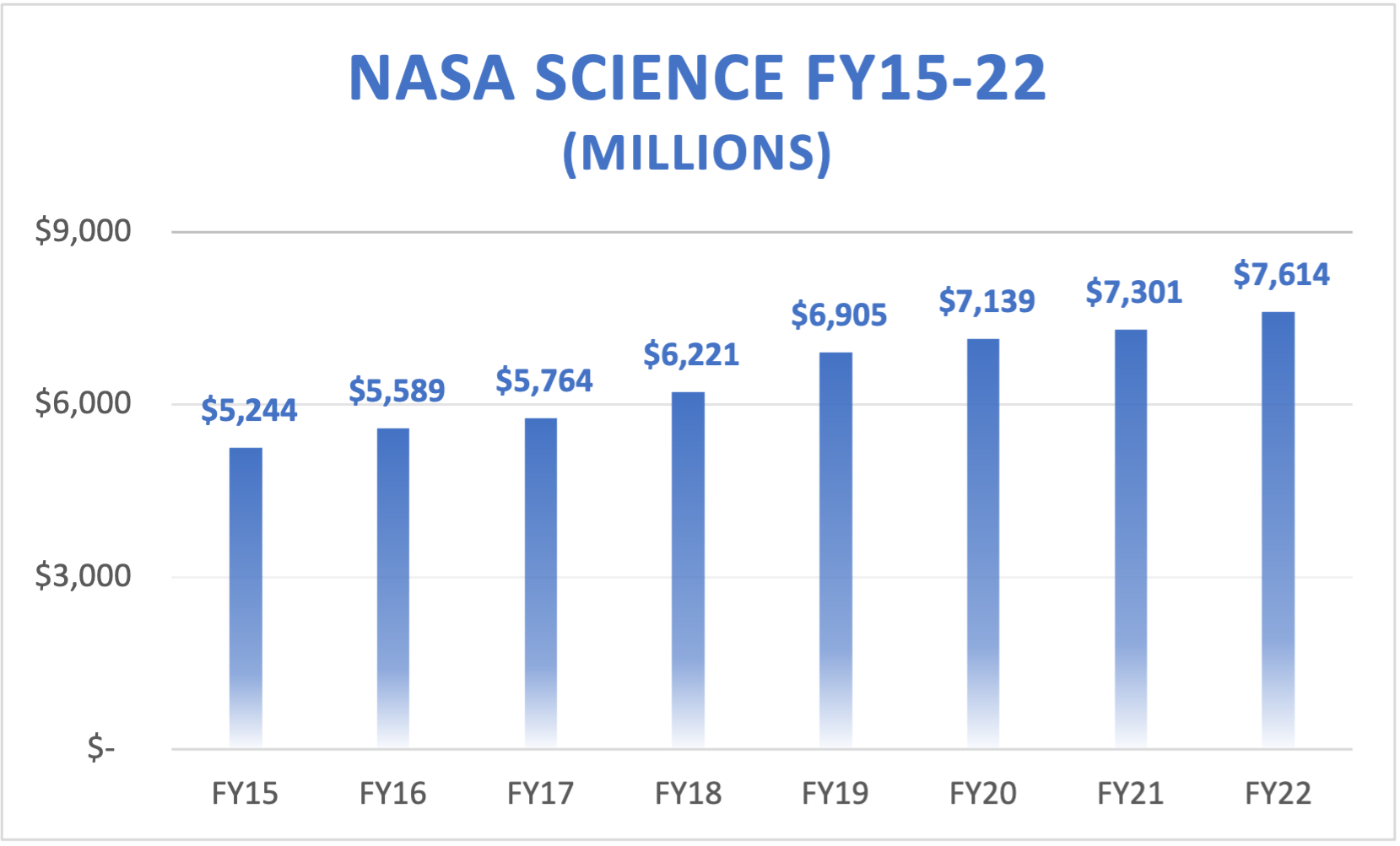
AAU urges Congress to provide at least $9 billion for NASA's Science Mission Directorate in FY23.
AAU recommends at least $9 billion for the Science Mission Directorate (SMD) in FY23. This directorate includes Earth Science, Planetary Science, Astrophysics, Heliophysics, and Biological and Physical Sciences divisions. All five of these divisions play a vital role in advancing the understanding of our planet and universe. The engineering development and scientific research enabling these missions are both groundbreaking and inspirational, especially to the next generation. This amount would allow robust funding for individual investigator grant programs, new competitive mission opportunities, and the development of new proposed missions.
AAU recommends at least $1 billion for NASA's Aeronautics Directorate in FY23. NASA-funded aeronautics research is integral to the nation’s research enterprise and has led to advances in the safety, capacity, and efficiency of the air transportation systems that we use on a daily basis. This level will allow NASA to make investments to reduce climate impacts of the aviation industry.
AAU urges Congress to facilitate a plan for returning to the Moon and Mars that includes strong support for all directorates of NASA and recognizes that robust Science, Aeronautics, and Space Technology Directorates are needed to ensure successful human space flight advancements.
AAU recommends that the Space Technology Directorate receive at least $1.5 billion in FY23 appropriations. This directorate funds partnerships among the federal government, industry, and academia to stimulate the development of high risk/high payoff technologies needed by the agency to achieve current and future missions.
AAU recommends $154 million for NASA’s Office of STEM Engagement, which houses the Space Grant Fellowship program. For Space Grant, AAU recommends at least $65 million in FY23. This program has enabled more than 24,000 undergraduate and graduate students to receive scholarships, fellowships, and internships.
A balanced portfolio will enable NASA to execute a strategic long-term mission. Science, aeronautics, exploration, and space technology are all vital to the success of NASA’s overall mission.